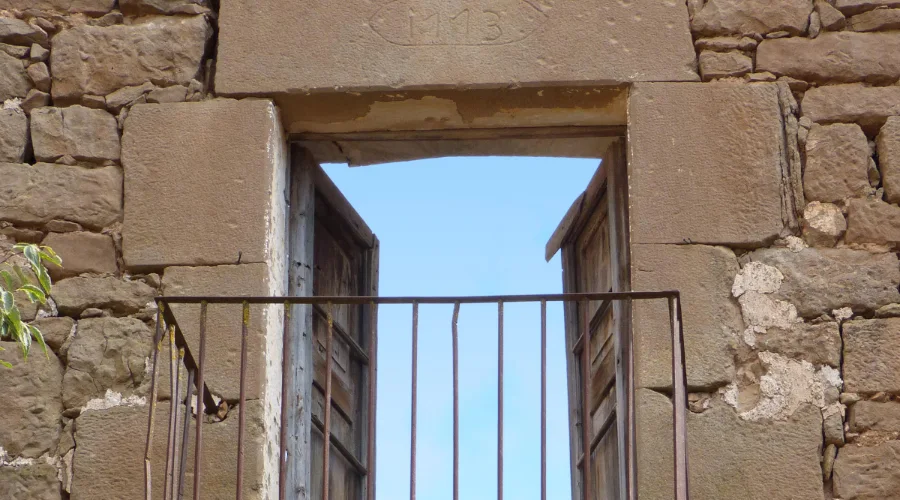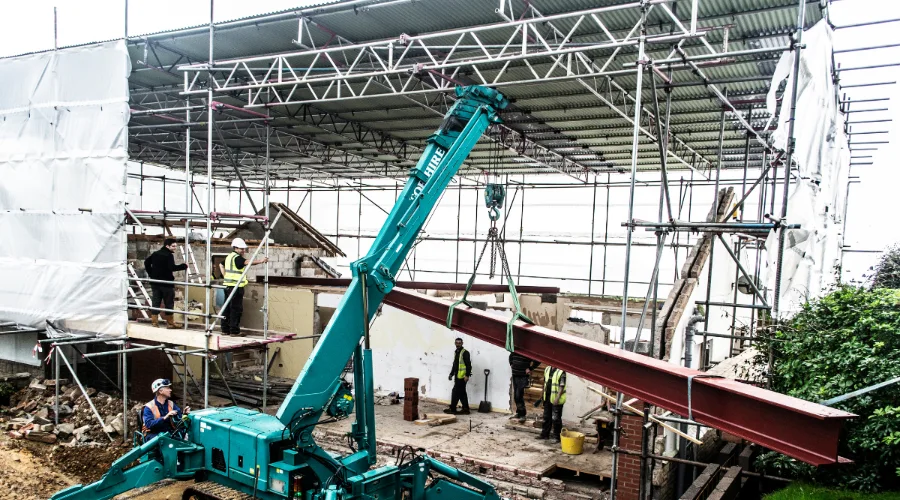Lintel supports the space above your doors and windows. It is a significant component of building construction. Lintels act as a bridge that distributes the load above openings to prevent cracks and structural failure. If they are not fixed properly, the structure crumbles over time.
At Brick & Bolt, we ensure that each lintel is constructed for maximum strength and longevity, as they allow homeowners and builders to build safer places to live and work.
What is Lintel Level?
A lintel is a beam that distributes and carries loads over doors and windows to adjacent walls or columns. It provides structural stability and minimizes masonry stress. Lintels are constructed with materials like timber, stone, reinforced brick, and steel, which are chosen for their economic viability and applicability.
For stability, they must have a proper length with at least a 10 cm bearing. A lintel load is transferred to the supporting walls or columns, and its own width must equal the walls to permit effective load transfer and stability.
Use of Lintel Level
- Lintel acts as a tie beam that helps to connect and strengthen walls, preventing cracks or separation.
- They distribute the weight of walls, windows, and doors to the surrounding masonry for stability.
- They provide structural confinement that ensures the building stays strong by holding masonry elements together.
- They support chhajja, which helps bear the load of projections like sunshades above windows and doors.
- Lintel protects your house from any damage that is caused by water penetration into the walls.
Standard Lintel Levels in Different Types of Buildings
Lintel heights differ according to building type to deliver structural support and functionality. The following table indicates typical lintel levels for different types of buildings.
| Building Type | Standard Lintel Level | Remarks |
| Residential Buildings | 2.1 m – 2.3 m | Common in houses and apartments, providing adequate headroom for doors and windows. |
| Commercial Buildings | 2.4 m – 3.0 m | Higher lintel levels to accommodate larger doors, display windows, and ventilation needs. |
| Industrial Buildings | 3.0 m – 4.5 m | Lintels have been designed to provide access to heavy machinery, heavy-duty doors, and ventilation needs. |
| Institutional Structures (Schools, Hospitals, Offices) | 2.4 m – 3.0 m | Ensures sufficient lighting and air circulation, meeting safety and accessibility standards. |
| Warehouses & Storage Units | 3.5 m – 5.0 m | Allows for large entryways, high stacking, and better material handling. |
| Low-Cost Housing | 2.0 m – 2.1 m | Standardized to reduce construction costs while maintaining structural integrity. |
Types of Lintels Used in Construction
Several types of lintels that are used in construction are as follows:
Timber Lintel Beam
These are used in hilly areas, but they are expensive and weak. As they are prone to decay and fire, you need to coat them with preservatives. Flitched beams, enhanced with steel reinforcement, offer a stronger and more durable alternative to standard beams.
Stone Lintel Beam

These kinds of beams are used where stone is easily available. Stone lintels are apt for small spans but are riskier in earthquake-prone areas due to their weak tension. They are used for decorative purposes only.
Brick Lintel Beam
Brick lintel beams are used for small openings with light loads. The mortar-filled frogs in bricks improve strength. Low-load structures can be built using them with temporary wooden support.
RCC Lintel Beam
This lintel beam is strong, fire-resistant, and durable. Plain concrete is used for small spans, while reinforced concrete handles larger openings.
Steel Lintel Beam

They are made of L or I-shaped steel sections, providing great strength. Requires precise installation, with at least 4 inches of support on both sides.
Reinforced Brick Lintel Beam
These are used for larger spans and are strengthened with steel bars. While building them, they can use bricks instead of concrete for added support.
Precast Lintel Beam
They are affordable, ready-made, and available in various sizes. Precast lintel beams are used in various building structures for quick and strong construction.
Functions of Lintel Levels
The important roles of lintel level in every structure are as follows:
Load Distribution
In the absence of lintels, doors and windows would face direct pressure from the roof and wall weight, causing instability in structures. Evenly distributed loads provide strength to the structure and prevent frame damage.
Enhances Visual Appeal
Lintels increase the overall beauty of a building, even though they provide structural stability. Their positioning brings steadiness to the structure, and if they are not positioned properly, it may affect the structure’s balance and proportions. So, lintels are considered essential to support the load of the structures by providing an elegant outlook.
Weather Protection
Lintels shield windows and doors from rain and moisture, prolonging their life and preventing water damage.
Choosing the Right Material:
Choosing the right material for lintel is crucial to building long-lasting structures. In that case, reinforced concrete and steel last for many years, and they are easy to handle and support the structures efficiently without causing any damage.
Determining the Load:
- To ensure the lintel can firmly bear the building, engineers calculate the height of the building, wall load, and roof weight.
Match with other Features:
- Create a lintel that can be perfectly aligned with other features of your space, like sills or moulding, to form a peaceful environment to live in.
Indian Building Codes:
- Lintels can be built according to the standard sizes given by building regulations to offer a safe and secure place for the residents.
Improving Look:
- Depending on the aesthetic appeal and style, the lintel can be revealed as a decorative element as well as a structural element that supports the sturdiness of buildings.
Conclusion
A robust lintel gives strength and stability to your home. It provides long-term strength, supports weight across openings, and avoids structural damage. The correct selection of lintel material and installation is essential in constructing a solid lintel.
We at Brick & Bolt provide expert guidance and superior construction services to make your house stand firm and secure. Call our expert staff today if you wish to construct a new building and require the right lintel solutions. With the proper lintel solutions, let us help you create a home that’s not only structurally sound but looks good as well. Book your consultation now!

